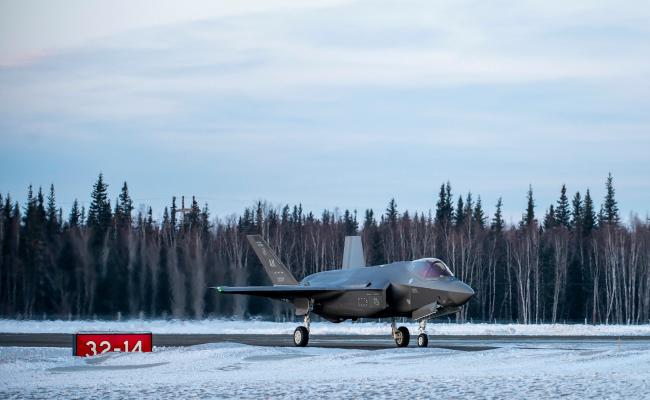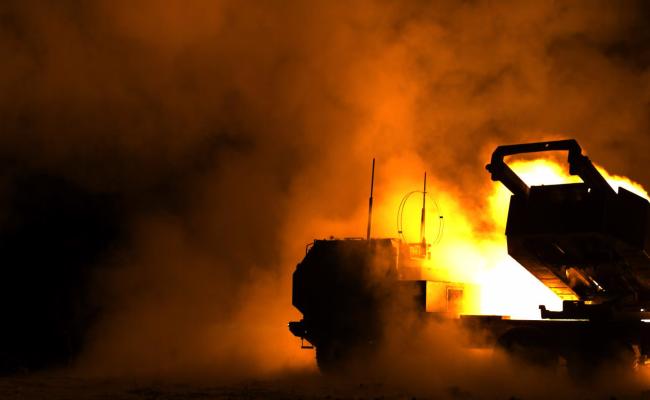Op-ed: Security and Economic Development: the US National Strategy for the Arctic Region 2022

American paratroopers during an exercise in Alaska in March. US military activity in the Arctic may reach a new coordinating office in the Department of Defense. (Photo: Alejandro Peña/US Air Force)
On October 7th 2022 the US released its National Strategy for the Arctic Region for the next ten years. The preceding strategy dates back to 2013 and the Arctic region has changed profoundly since.
New National Strategy for the Arctic Region is a compact document comprising 15 pages divided into the vision for the Arctic, changing conditions in the Arctic, four strategic pillars and guiding principles.
In the vision, the US aspires to protect and advance US interests in the region, including providing for homeland security and defense.
It also envisions mitigating and strengthening resilience to climate change, increasing economic opportunities in the United States; protecting and improving livelihoods, including for Alaska Native communities; and upholding international law, rules, norms, and standards across Arctic countries.
Changing conditions
Climate change, new economic opportunities and challenges in the Arctic, as well as, increased Russian and Chinese investments are all listed as changing conditions in the Arctic.
Cooperation is, however, limited to the US partners and allies
The biggest change, however, occurred in political relations between seven Arctic states and Russia. The main intergovernmental cooperation forum Arctic Council has been on pause since the spring of 2022.
The new US strategy is vocal about Russia’s aggression in Ukraine by referring to it twelve times throughout the document. In the strategy document the US's role is viewed as an upholder of international law, rules, norms, and standards in the Arctic.
Despite geopolitical tensions, the strategy still maintains the narrative of a peaceful, stable, prosperous, and cooperative Arctic area, where disputes are resolved without the use of force.
Cooperation is, however, limited to the US partners and allies (Canada and European Allies and partners, the Kingdom of Denmark including Greenland, Finland, Iceland, Norway, and Sweden).
The authors of the strategy appear to take the view that government-to-government cooperation with Russia in the Arctic is rendered virtually impossible.
A bigger effort should be placed on reducing GHG emissions worldwide
Four strategic pillars
Four strategic pillars guide the strategy: Pillar 1 (Security), Pillar 2 (Climate change and environmental protection), Pillar 3 (Sustainable economic development) and Pillar 4 (International Cooperation and Governance).
Security in the first pillar is understood, in a broad sense, to mean from national defense and homeland security to safe commercial and scientific activities.
Security objectives include an improved understanding of the Arctic operating environment, military presence in the Arctic in support of US homeland defense and more unified efforts by coordinated activities with NATO allies and Arctic partners.
Notably, the strategy lays the foundation for increased investments in the US Coast Guard icebreaker fleet and security infrastructure.
Climate change and environmental protection are focused on building community adaptation and climate resilience, mitigation of emissions in the Arctic, and expanding research to better understand climate change. This pillar pays attention to the resilience of Alaskan Native communities and promises support for co-production of knowledge.
While it is important to mitigate emissions in the Arctic itself, it needs to be understood that a bigger effort should be placed on reducing GHG emissions worldwide. Russian territory contributes to over 50 per cent of the total Arctic surface area.
Cooperation with Russia in the Arctic is impossible at present.
With the new observational tools and data for climate models, some of the data can be collected remotely, however some also require physical presence across the whole Arctic.
As such, there exists a risk for climate change research in the Arctic when the strategy states that cooperation with Russia in the Arctic is impossible at present.
The importance of sustainable economic development is emphasized much more strongly than in the previous strategy document. According to the new strategy, the US will foster responsible, inclusive, and transparent economic growth in Alaska and the Arctic.
The plan is to invest in infrastructure, enhance access to services, and encourage the development of industries that expand economic opportunities for local communities. Already in 2021, the US invested in Alaskan transportation, broadband, clean water and energy.
Support will be granted to renewable energy, critical mineral production, tourism and knowledge economy sectors in Alaska. Furthermore, the US seeks to increase responsible investment in the Arctic.
In the absence of sustainable investment criteria in the Arctic this will be a challenging task, but at the same time will attract much more research and international cooperation to advance the topic of sustainable investment in the Arctic.
Finally, international cooperation and governance, as part of the fourth strategic pillar are viewed through the existing multilateral and legal frameworks dedicated to the Arctic.
The US will increase its diplomatic presence across the Arctic
The objective is to sustain the Arctic Council and other Arctic Institutions and Agreements and to protect freedom of navigation and continental shelf limits.
The US will increase its diplomatic presence across the Arctic by adding more personnel and posts. In 2021 the US established the Ted Stevens Center for Arctic Security Studies (Stevens Center) under the Department of Defense, and in 2022, the US announced plans to appoint an Ambassador-at-Large for the Arctic Region.
Aftermath
The strategy reads as a comprehensive document with a strong emphasis on security and economic development.
It appears that US-based Arctic investments will increase in the next decade. Notably, the raising living conditions of the Alaskan population and Alaskan Native communities and their participation in co-creation of knowledge and co-management of resources are high on the agenda.
The reader may, however, experience cognitive dissonance when the Arctic is portrayed both as “peaceful, stable, prosperous, and cooperative” and the region with ”raised geopolitical tensions”.
The document gives an impression of the formation of a split Arctic, the US with its partners and allies on one side and Russia on other. The challenge arises for the future knowledge formation on the Arctic as a whole.
The time will show how the strategy will be implemented and what practical challenges will arise. The Arctic region is changing very fast, and the renewal of the strategy every ten years may be too wide-spaced to reflect the demands of the Arctic and its people.



